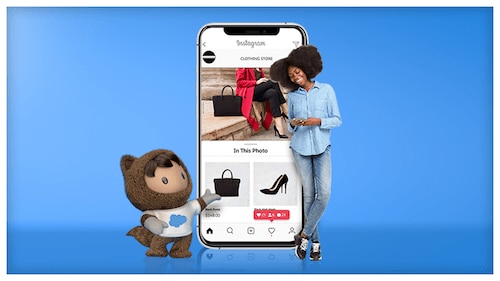You might think startups always have a leg up on enterprises when it comes to innovating quickly and adapting to changing market conditions. After all, they don’t have fixed overhead and older, code-based programs. But I’ll let you in on a secret: It’s possible for an enterprise to be as nimble as a startup (cue audible gasp).
How can an enterprise make this happen, especially with legacy systems and silos? It takes a platform that supports high volumes, unpredictable traffic, and the agility to take a headless commerce approach. With this approach, enterprises innovate faster and reach customers wherever the buy button shows up next.
How does headless commerce work for enterprises?
Startups are born to move fast. In commerce, that means reaching shoppers anywhere. They can build premium commerce experiences with drag-and-drop tools and the latest retail tech. For enterprises, it’s not always so easy. Every touchpoint ties to legacy code and multiple back-end systems.
Headless commerce eliminates the need to replatform. All the technology is already in-house. APIs navigate touchpoints and unify the journey. The customer experience is never disrupted, even as updates happen on the back end. It’s a win-win. Enterprises keep what they have and gain the flexibility to innovate quickly.
How can I collect and measure my data with headless commerce?
It’s one thing to build a premium experience at every touchpoint, but another to measure the impact. Global enterprises traditionally collect whatever data they can – even inaccurate or ambiguous data. For example, they may use historical data on the U.S. market based on overall growth without knowing the specific channel that drove that growth.
Headless commerce pulls in data from existing systems to break down the customer journey into granular steps. Enterprises capture data for every API. Instead of an aggregate global social media conversion metric, enterprises can see specific metrics by social channel, from the U.S. to China and regions in between. Think of it as one KPI per API. Enterprises use this data to determine productivity, reach, conversion, growth, and revenue.
How can headless commerce personalize my customer experience globally?
Headless commerce allows enterprises to capture data and unify the entire customer journey. Even if a customer appears on a different channel, they are recognized as the same individual. This is because they have a complete view of data. Enterprises then personalize the experience at scale with artificial intelligence (AI), from the storefront to third-party channels and applications. Without headless commerce, a brand will have to find other ways to understand the data from numerous touchpoints. The experience is often fragmented for the customer.
How does headless commerce increase CLV?
A headless commerce approach increases customer lifetime value (CLV) because it enables companies to meet customers across owned and third-party platforms. We call this “shopping at the edge.” Brands can be flexible and push experiences to the platforms where customers spend their time.
For example, there’s Instagram Shopping. Brands create a frictionless experience that reaches customers at the point of inspiration. They connect customers to commerce on-platform. From Instagram, customers seamlessly move to the commerce site without deliberately changing platforms. Without headless commerce, customers must leave the platform to go to a different one. Because of this interruption, customers are more likely to abandon the experience altogether.
Enterprises don’t have to sacrifice flexibility as they scale — both in their business and within their organization. See how to quickly get up and running with our Salesforce Commerce Quick Start Solutions.




























